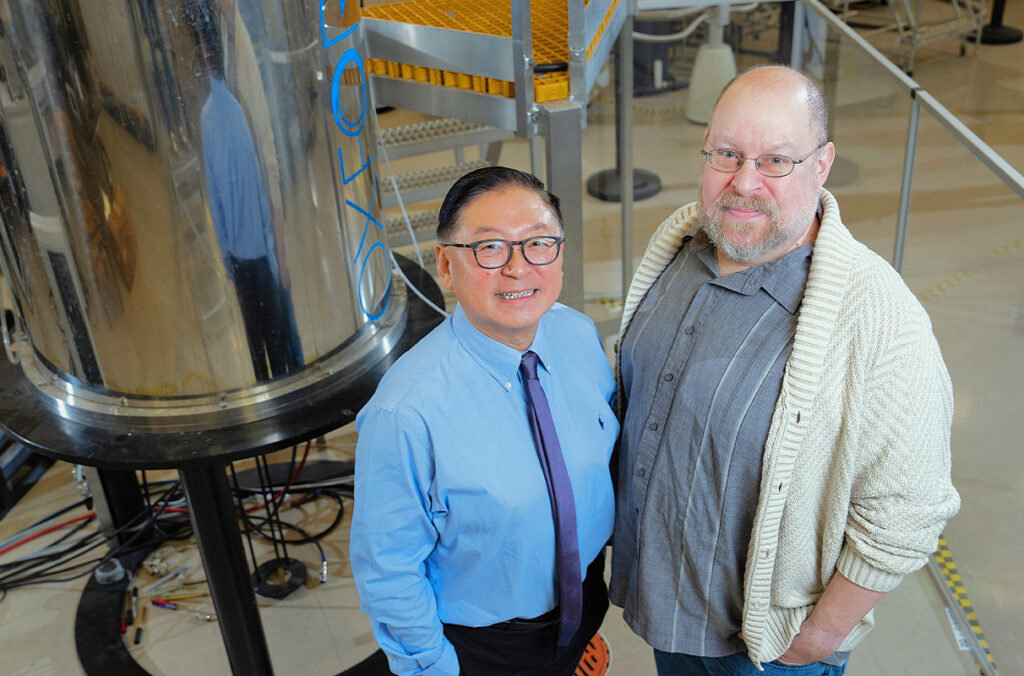
© Andrea Starr and Eddie Pablo / Pacific Northwest National Laboratory
In a new study in the International Journal of Hydrogen Energy, Washington State University Professor Bin Yang and colleagues demonstrated that a type of lignin-based jet fuel they developed can chemically bind hydrogen in a stable liquid form. The research has many potential applications in fuels and transportation and could ultimately make it easier to harness hydrogen’s potential as a high energy and zero emissions fuel source.
For the study, researchers at WSU, Pacific Northwest National Laboratory, the University of New Haven, and Natural Resources Canada set out to address one of the major challenges with using hydrogen as a fuel source. The lightest element’s low density and explosive nature make storage and transport technically challenging, inefficient, and expensive.
The January article details how the research team discovered the new hydrogen-storing process using chemical reactions that produced aromatic carbons and hydrogen from lignin jet fuel — an experimental fuel developed by Yang’s lab based on lignin, an organic polymer found in plants.
“Hydrogen is a versatile energy carrier that could help the U.S. meet its targets for zero-emission mobility, integration of renewables, and decarbonization of industry,” Yang said.
The discovery points to new uses for the lignin jet fuel developed at WSU by Yang, who previously tested a new continuous process that creates the fuel from agricultural waste. Experiments have shown that the sustainably produced fuel could increase engine performance and efficiency while dispensing with aromatics, the pollution-causing compounds found in conventional fuels.
“This innovation offers promising opportunities for compatibility with existing infrastructure and economic viability for scalable production,” Yang said. “It could help create a synergistic system that enhances the efficiency, safety, and ecological benefits of both sustainable aviation fuel and hydrogen technologies.”
Next, WSU researchers will collaborate with scientists at the University of New Haven to design an AI-driven catalyst that enhances and completes the reactions, making them more efficient and cost-effective.
Funding for the work came from the U.S. Department of Energy’s Office of Energy Efficiency and Renewable Energy and its Hydrogen and Fuel Cell Technologies Office.
Author
Seth Truscott
Source
Washington State University, press release, 2025-01-27.
Supplier
Natural Resources Canada
Pacific Northwest National Laboratory PNNL
University of New Haven
US Department of Energy (DoE)
Washington State University
Share
Renewable Carbon News – Daily Newsletter
Subscribe to our daily email newsletter – the world's leading newsletter on renewable materials and chemicals












